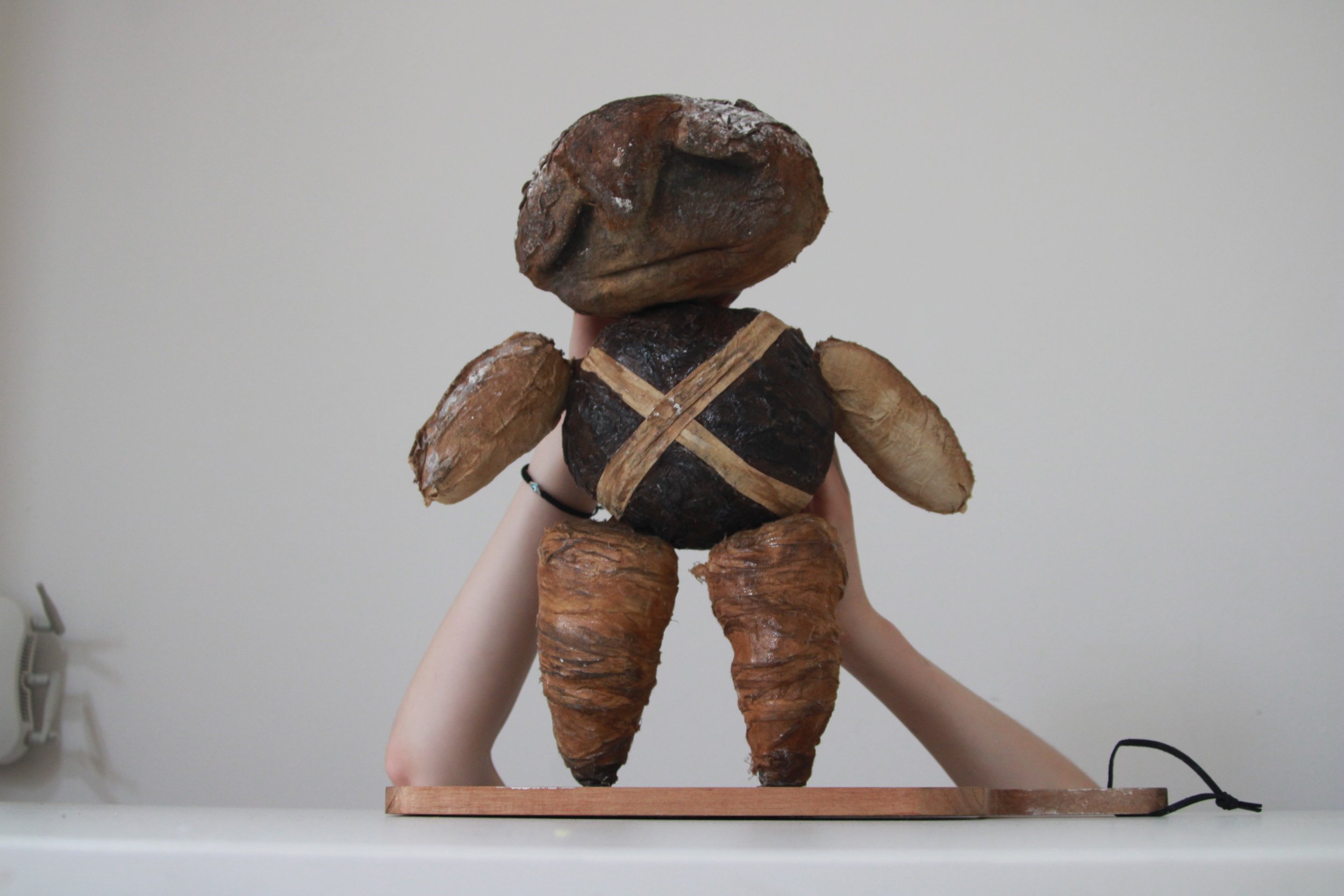GIANT! The Feast
Puppet designer, Maker, Puppeteer and Team Leader
How do you get rid of a giant? A raucous medieval puppetry play with a greedy baron, a hopeless jester, and some revolting peasants. Visual and musical story telling made for 4-9 year olds but suitable for all.
Devising an original piece collaboratively
Old Library - RWCMD (2023)
Giant! Old Library - RWCMD 2023
Directors: Lucy Hall and Dik Downey
Feast Group: Nico Venables, Finn Jaques, Evan Stead, Night Akter
Process
The show was developed by five groups each working from a rough storyline revolving around a tyrannical lord trying to get a giant to leave his land. The group I led developed the Mill and the Feast scene; mixing education and history throughout our story. A giant mill, a dancing breadman and a feast full of weird and wonderful historical foods, finishing off with a serenade from a giant Roasted Boar head!
My main designs for the show were Breadman and a magical oven, the Falcon and the flour milling story. Taking inspiration from Bute Park’s Mill Leat and historical feast recipes and trying to use as many sustainable materials as possible in our puppet making and storytelling
Breadman and the Oven
Originally made out of real bread, preserved with PVA and Glaze, Breadman was carved out of foam and covered in fabric. His main bread’s were a Sourdough head, Hot Cross Body, baguette arms and Croissant legs, all found to be common bread in medieval England and Europe!
This jumble of dough needed to have a detachable head and to be able to run and dance on stage. Because of this his head was attached via a strong magnet and his arms and legs were attached with leather joints.
The oven worked similarly to a magic trick with a false bottom which breadman hid in and appeared mid-performance as if by magic! The top of the oven held 30 foam bread rolls which all fell out mid-performance while dough cooked in the oven. The main form of the oven was made of of laminated cardboard with a metal backpack frame so that the oven could be worn by the puppeteer.

First breadman! - made of real bread!
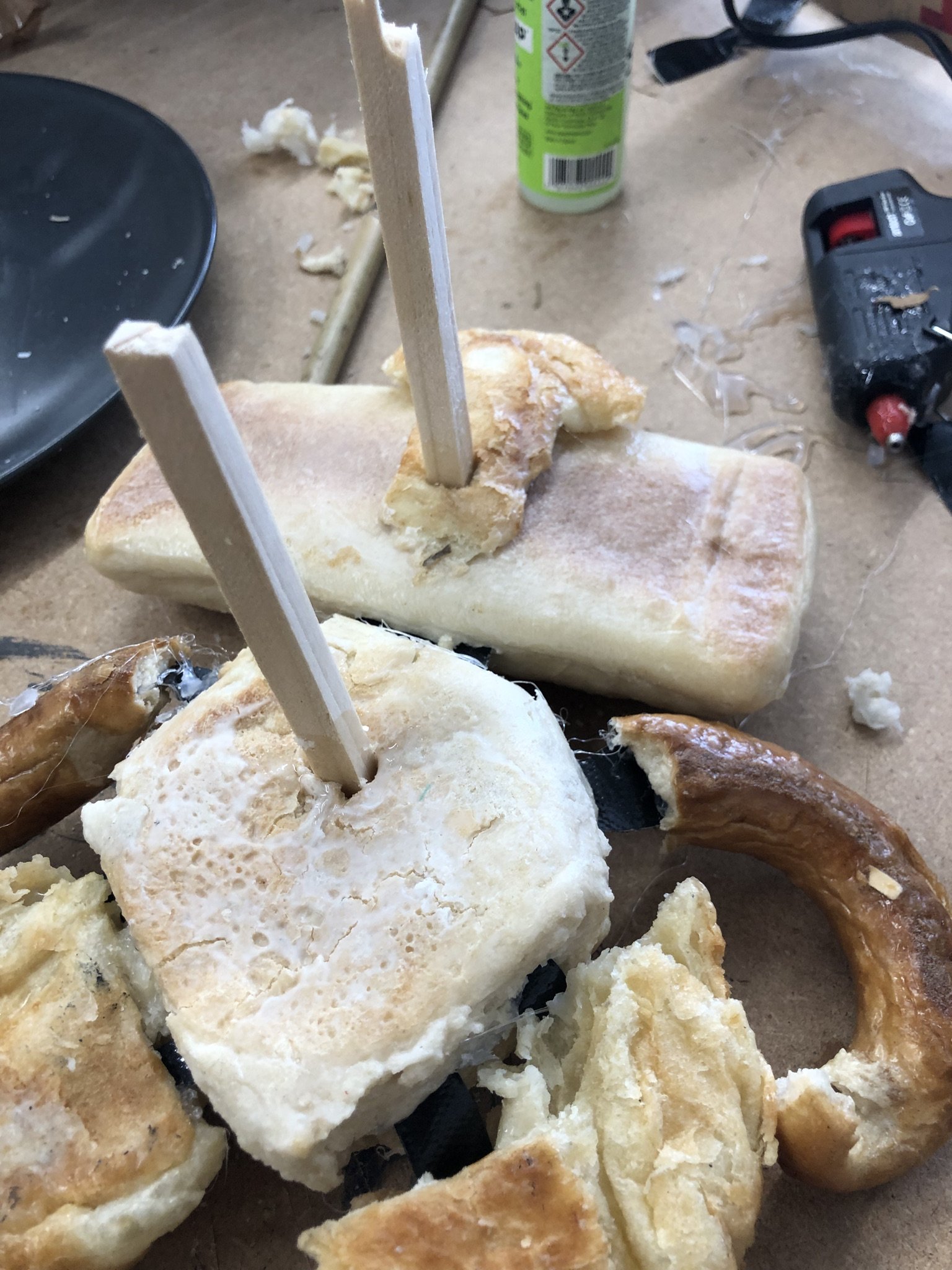
Dowels stuck in back for movement

First breadman and oven duo

Scale sketch for foam body

Foam pieces ready to sculpt
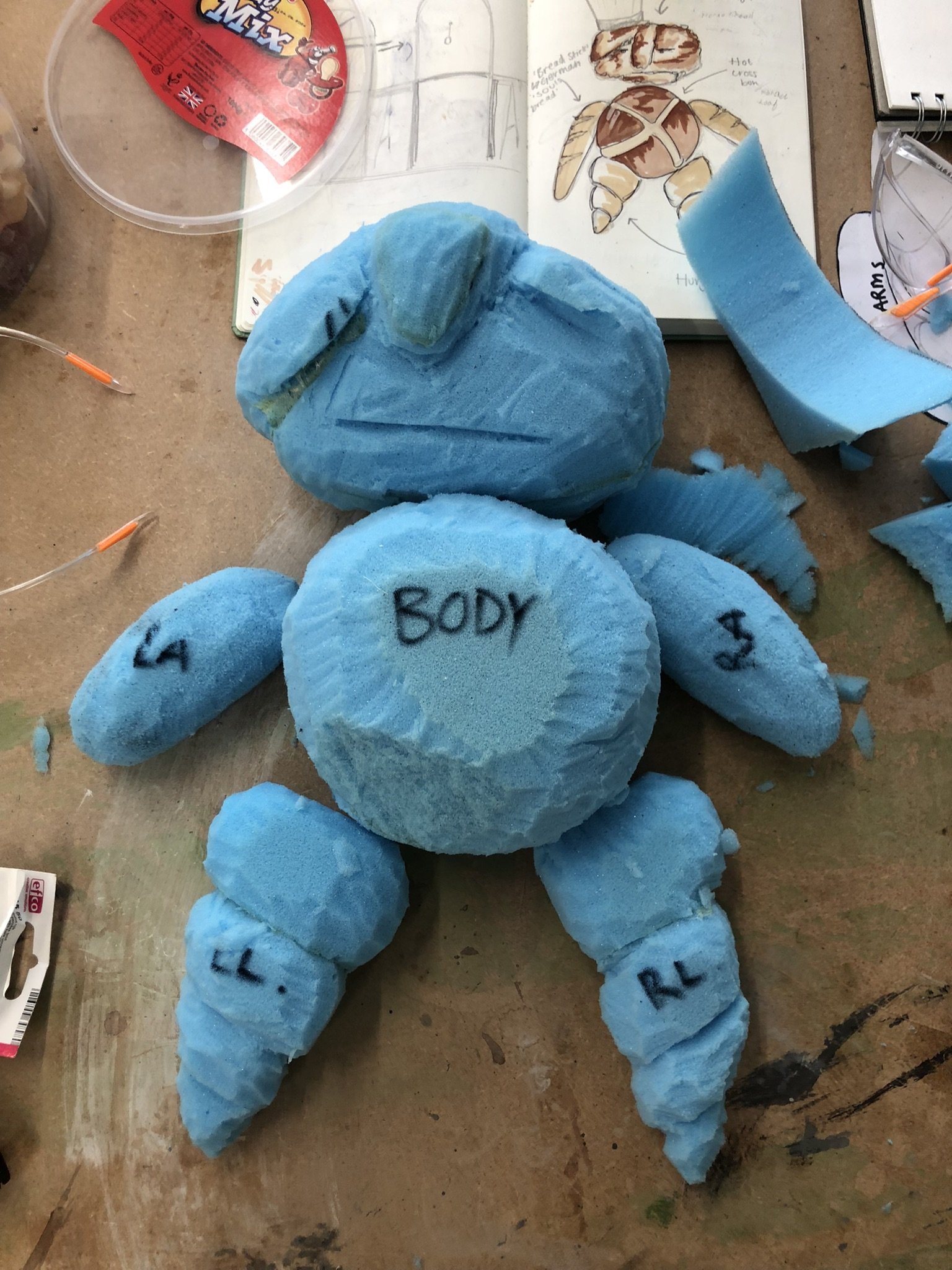
Sculpted foam peices

Base layer on foam body- ready to render!

Inner structure of oven
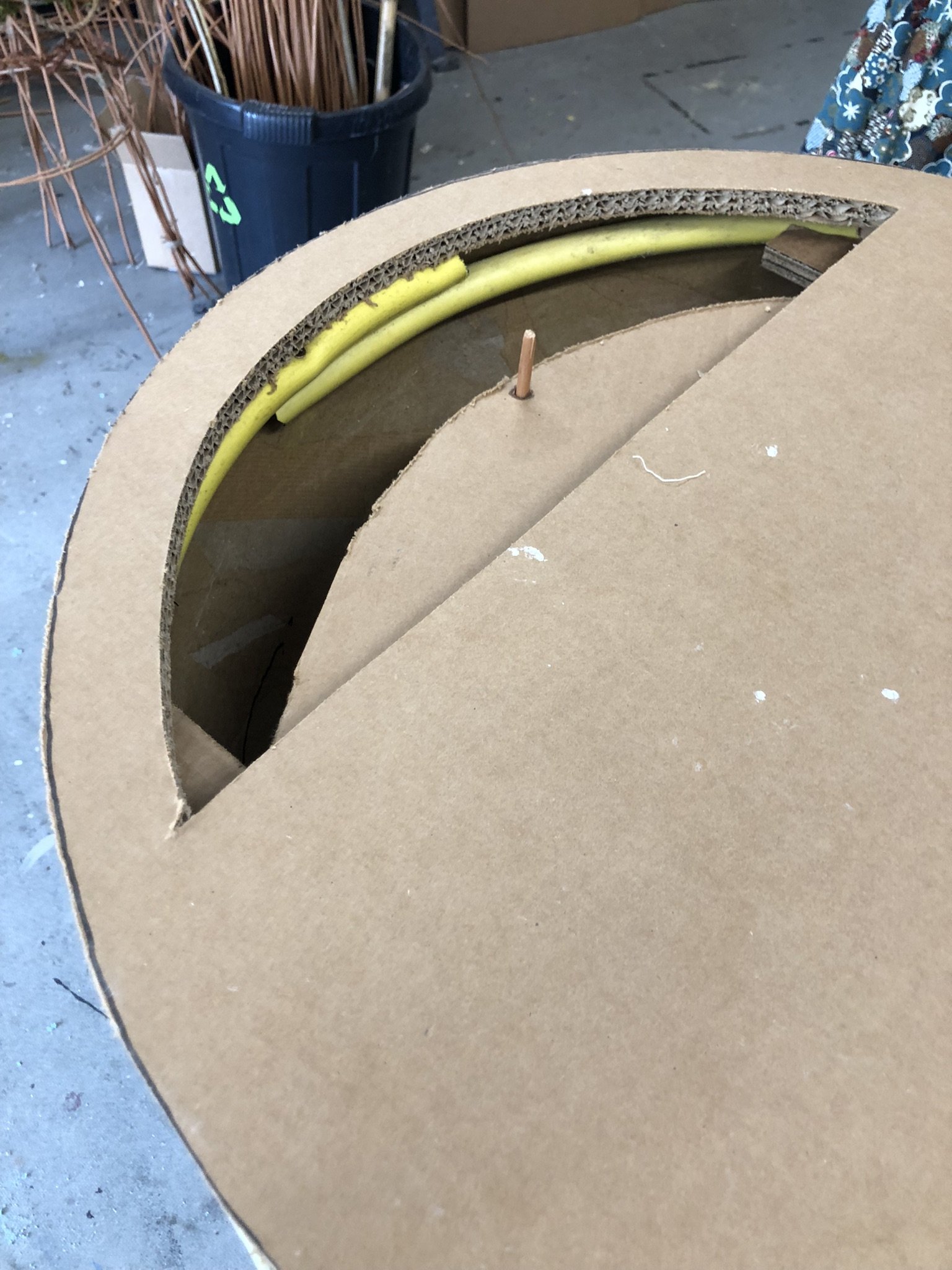
Trapdoor in roof of oven for bread rolls to fall out of

Fully attaching top and base togehter
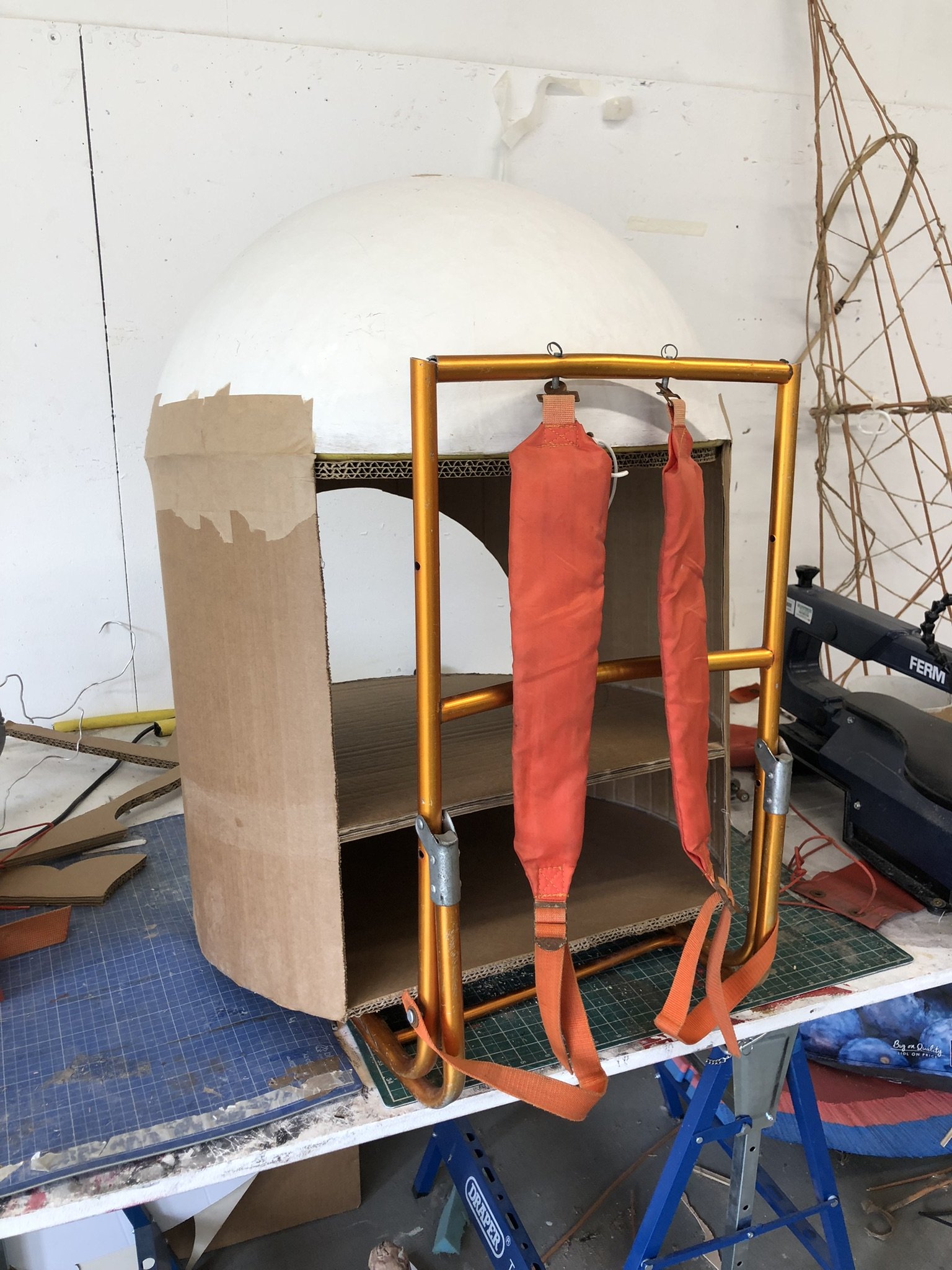
Backpack framework

Whitewash render


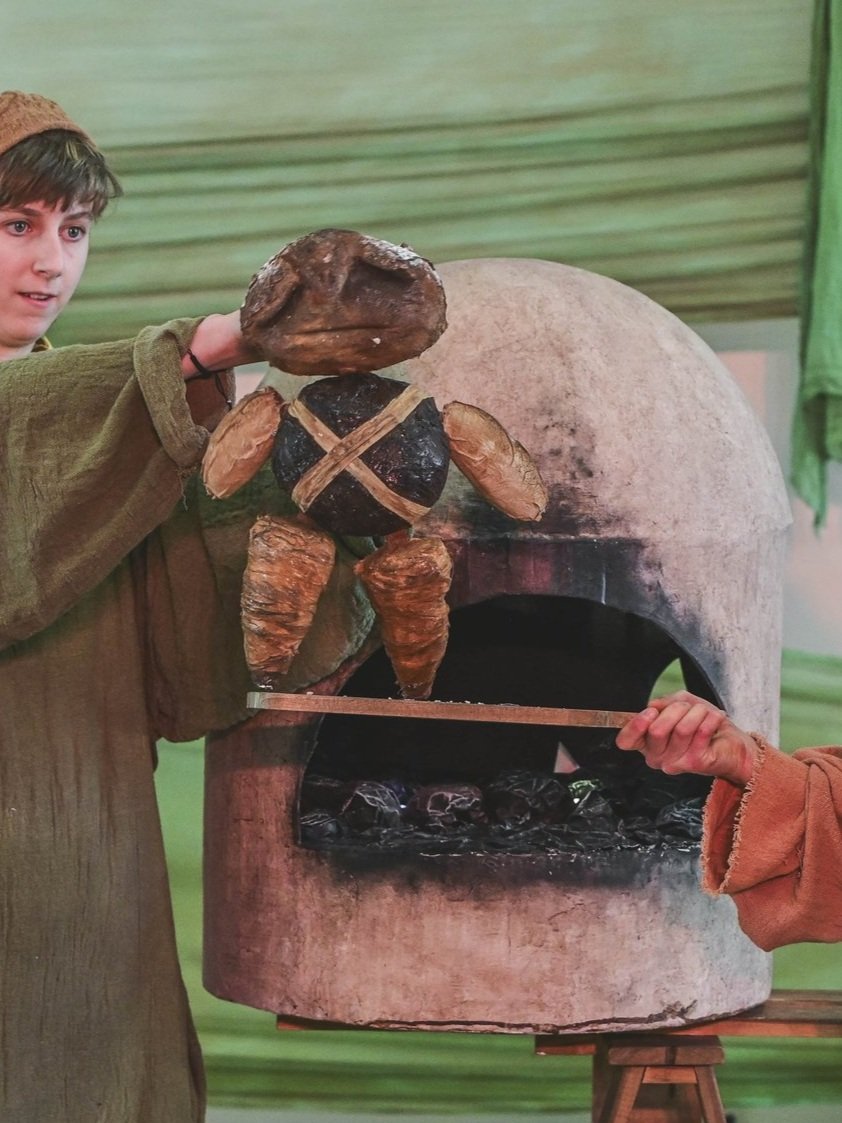

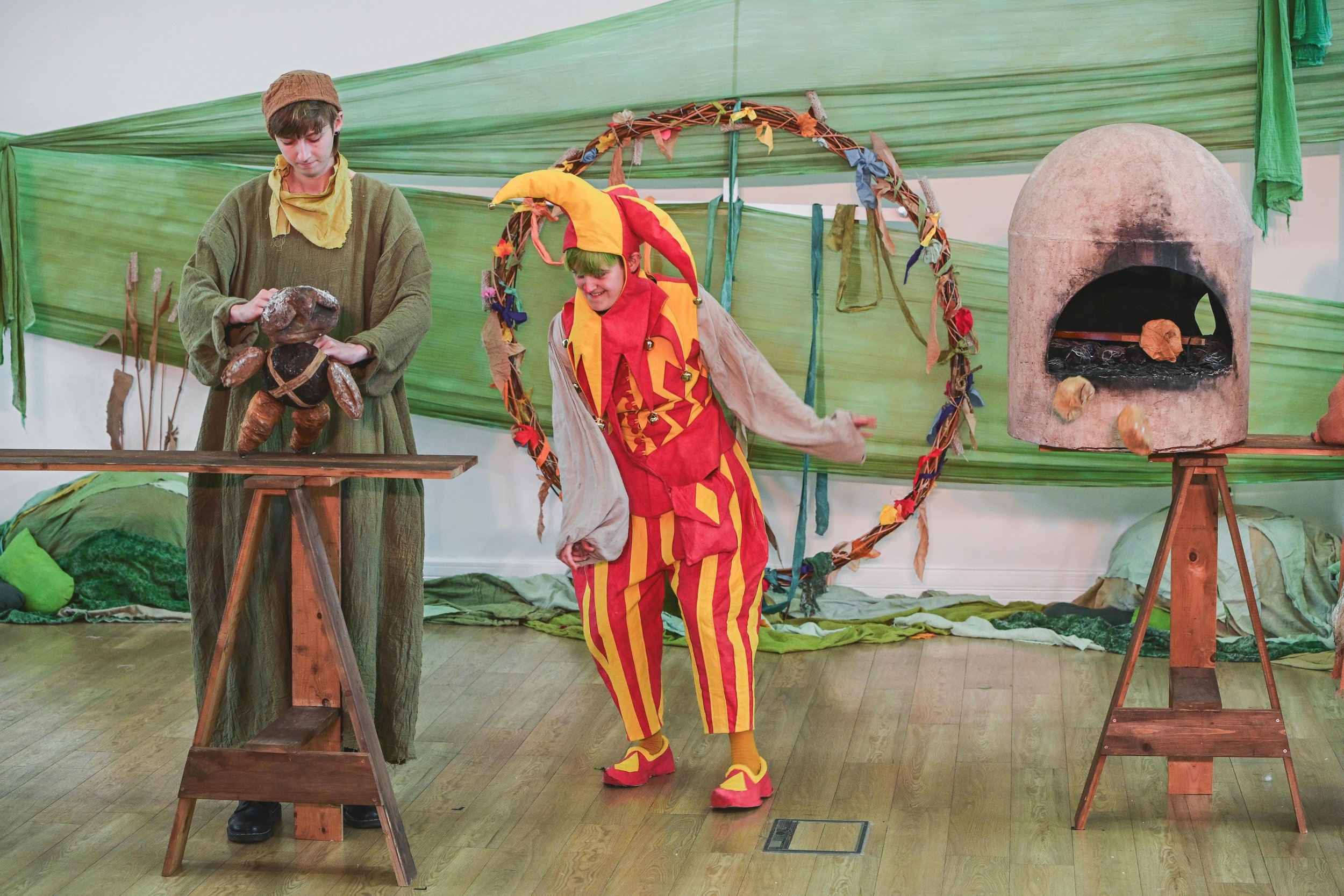
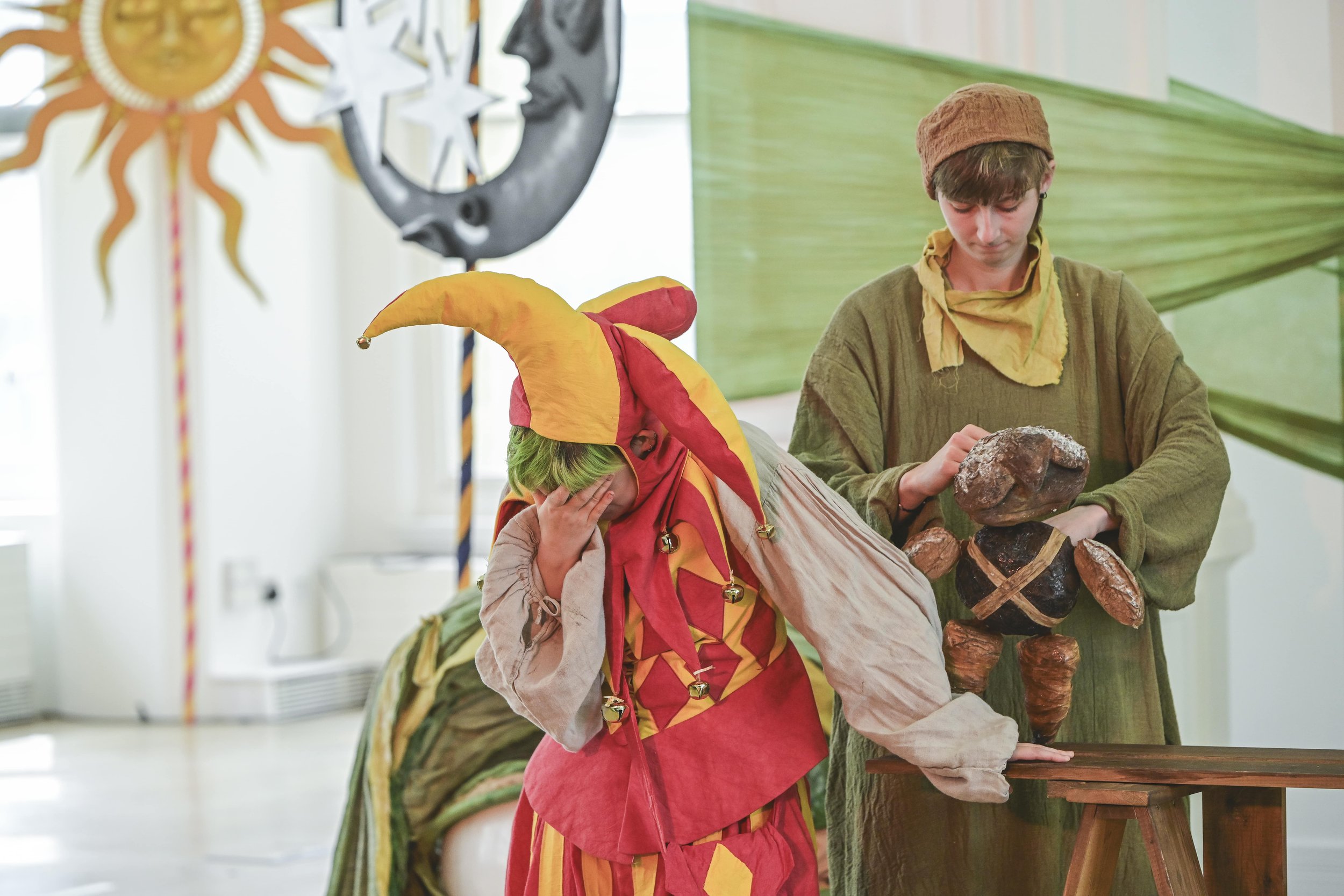
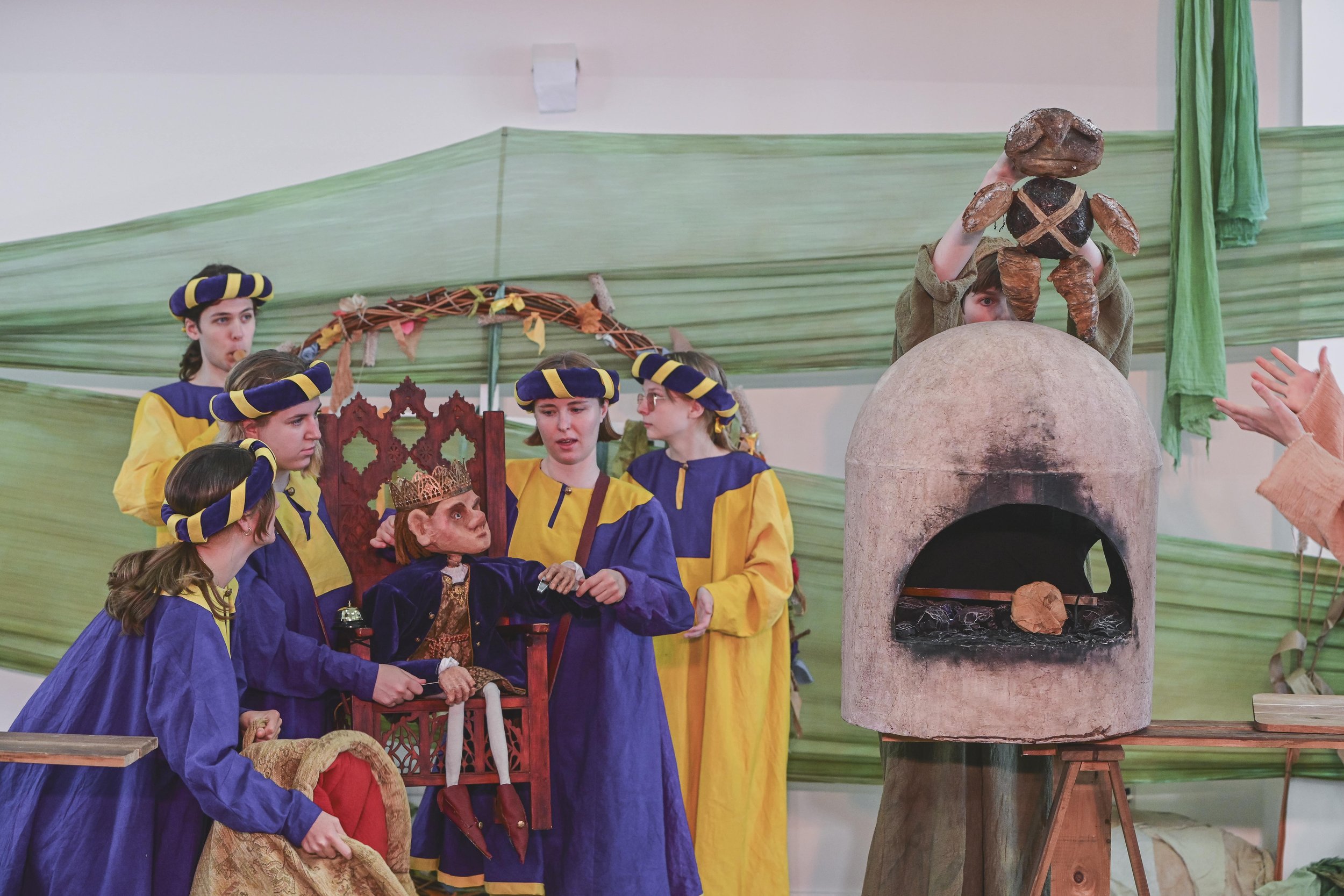

The Mill
Telling the story of Medieval milling was one of the challenges of the Feast story. In the group we devised a ‘mad science’ type story about the milling of flour, passing grain and cotton wool flour through tubes to show the different stages of the milling process.
The design on the mill changed quite a lot throughout the devising process, going from having 3 rotating mill stones attached to the center, to being 3 stand alone parts, the mill stone, the flour bag and the flour funnel.
These pieces were all puppeteered separately to tell the story, starting with threshing the wheat, pouring the grains into the millstone and grinding the stone and finally producing flour out of the base of the millstone which travelled up a wooden pipe, ending up in the flour bag!
The final piece to the Milling scene was the water wheel. Based off of the Bute Park Mill Leat, the water wheel rotated throughout the scene and was draped with silk ‘water’, which was used to create bread at the end of the scene!

Initial drawing of the mill scene

Scale model of the spinning option for mill stones
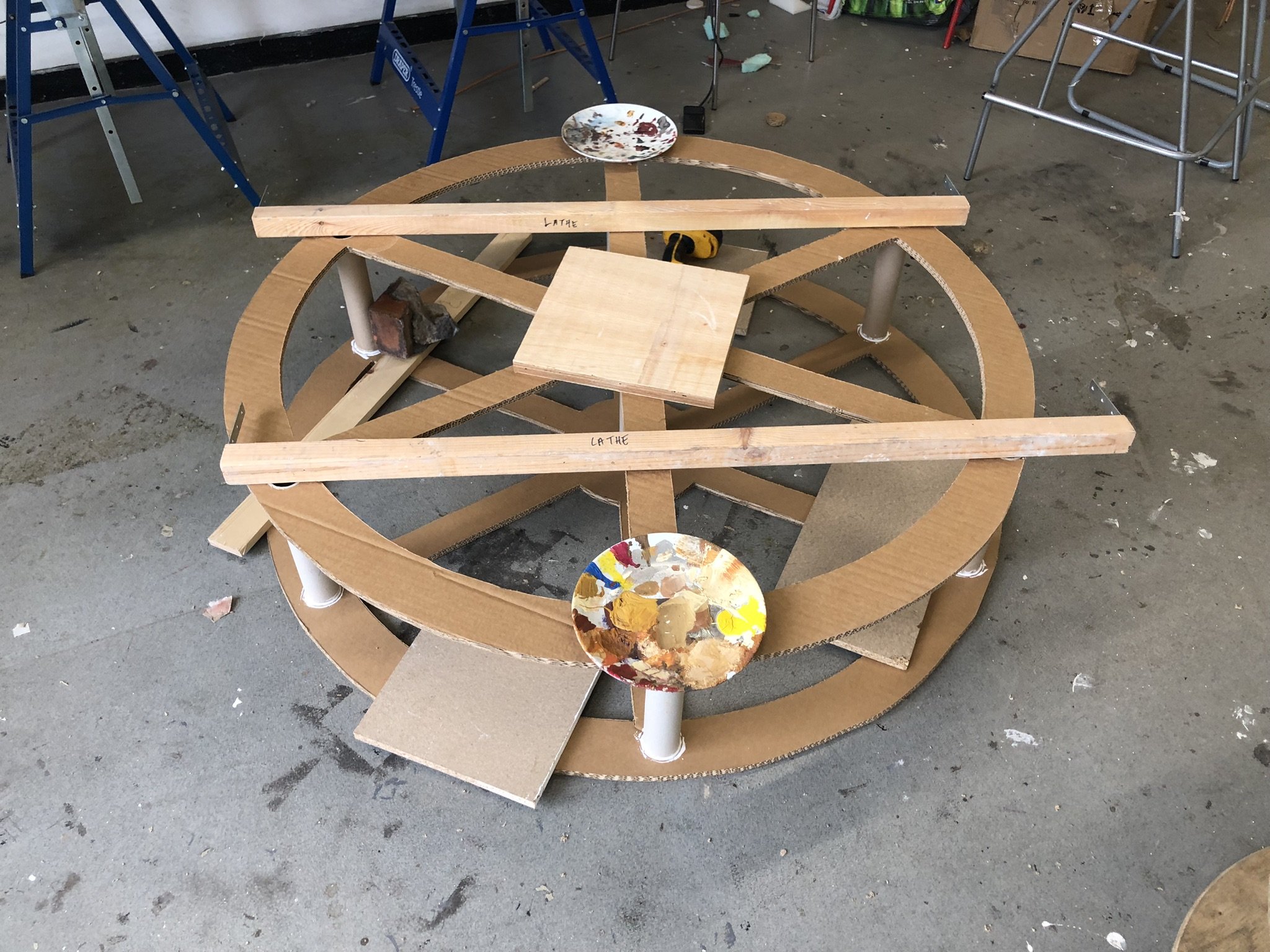
Making the water wheel - made from laminated cardboard

Working out the mechanisms of the mill - how would the flour travel into the bag?!

Building the frame of the waterwheel
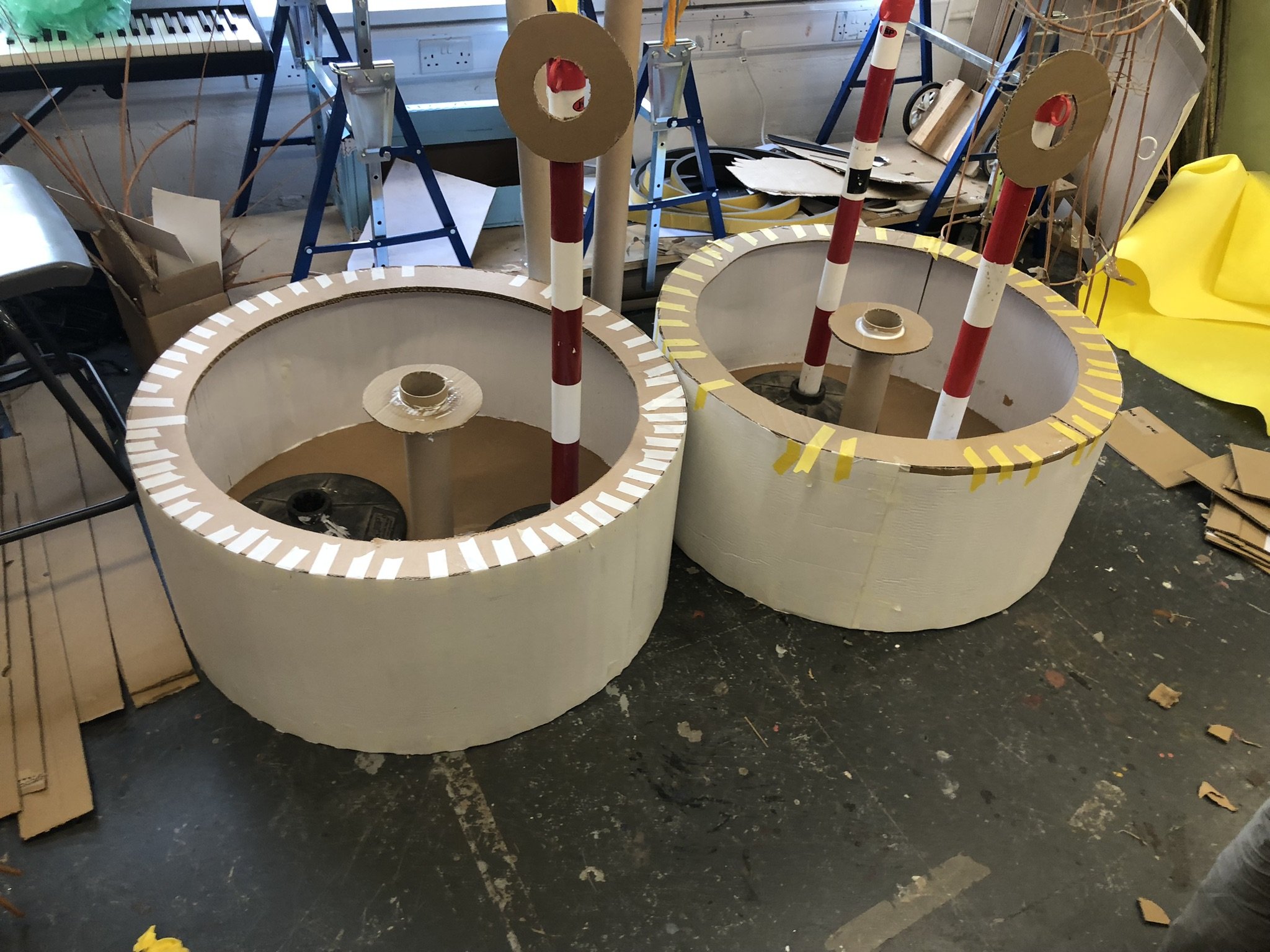
Millstone base. Stones needed hollow center and to be light so carboard was the best material choice available
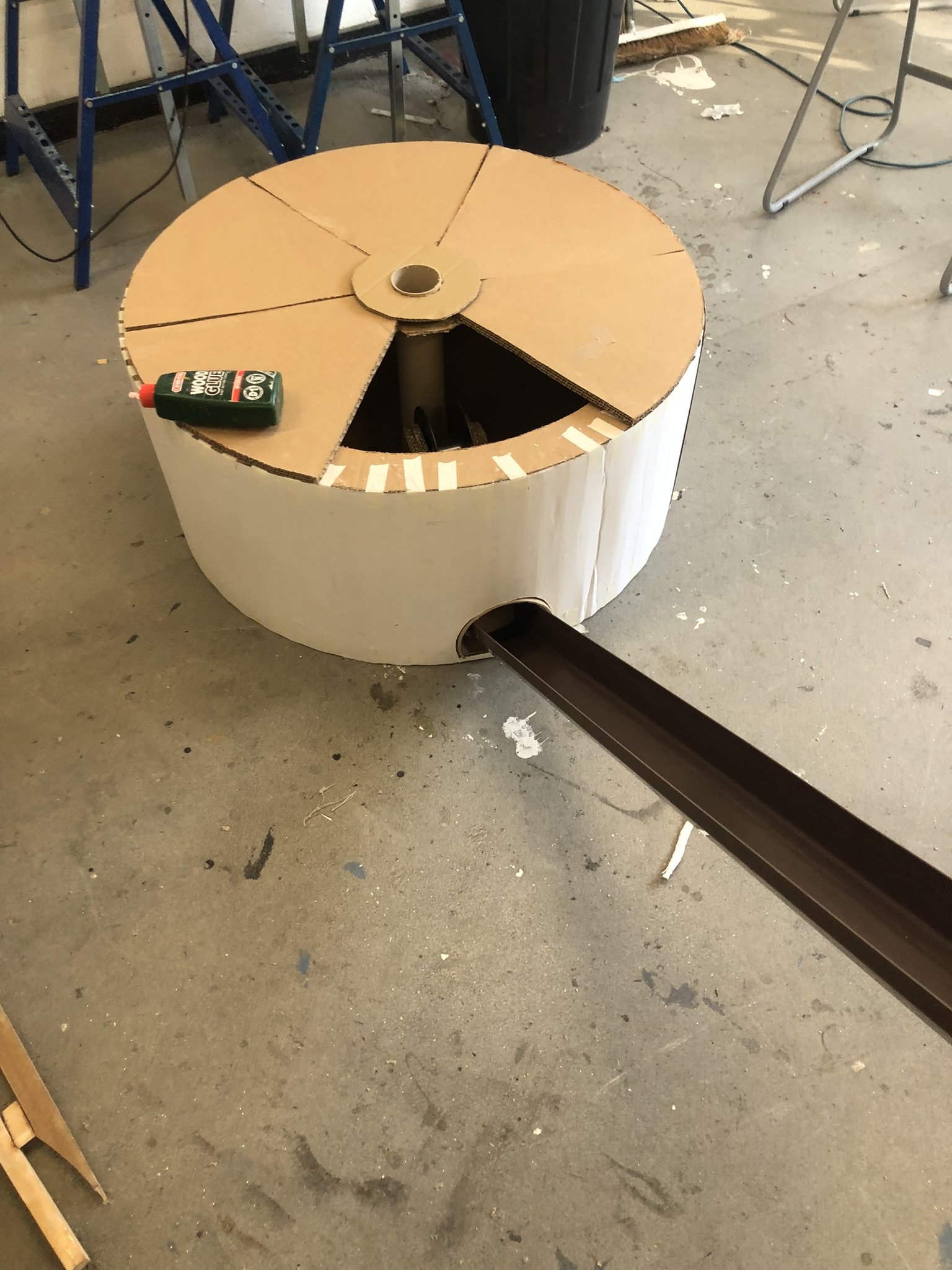
Testing the flour pull system.

Fully assembled millstones ready to texture and render

Adding ruts to the top and sides of the stones to give the impression that the stone had been carved. These pieces were paper-mached over the top of.

Final render - texture was added by mixing sawdust with PVA to strengthen the papermache. This texture was picked up at the end by dry brushing the millstones





The Falcon
Using the wings that I had previously made for a specialism, I build a body with a head and leg mechanism on it.
The Falcon was required to fly around, catch a rabbit, land on a hand and attack the Giant’s eye.
Translating a mechanism into a puppet after making and rendering the wings was a challenge to work around as I needed to ensure that the body form did not affect or hinder the mechanism. To ensure that this did not happen, I created a paper body form using the base of a tester handle that I had made for the mechanism. I then cut a patten from the form and created a body out of 5mm plastazode foam.
The head mechanism was made using a wooden ball, string pull and elastic to make the head return to its original position when the falcon was flying. The form of the head was made from a clay sculpt and worbla form.

Paper body sculpt

Paper body sculpt

Testing body sculpt shape against the wings

Pattern cut from Plastazode
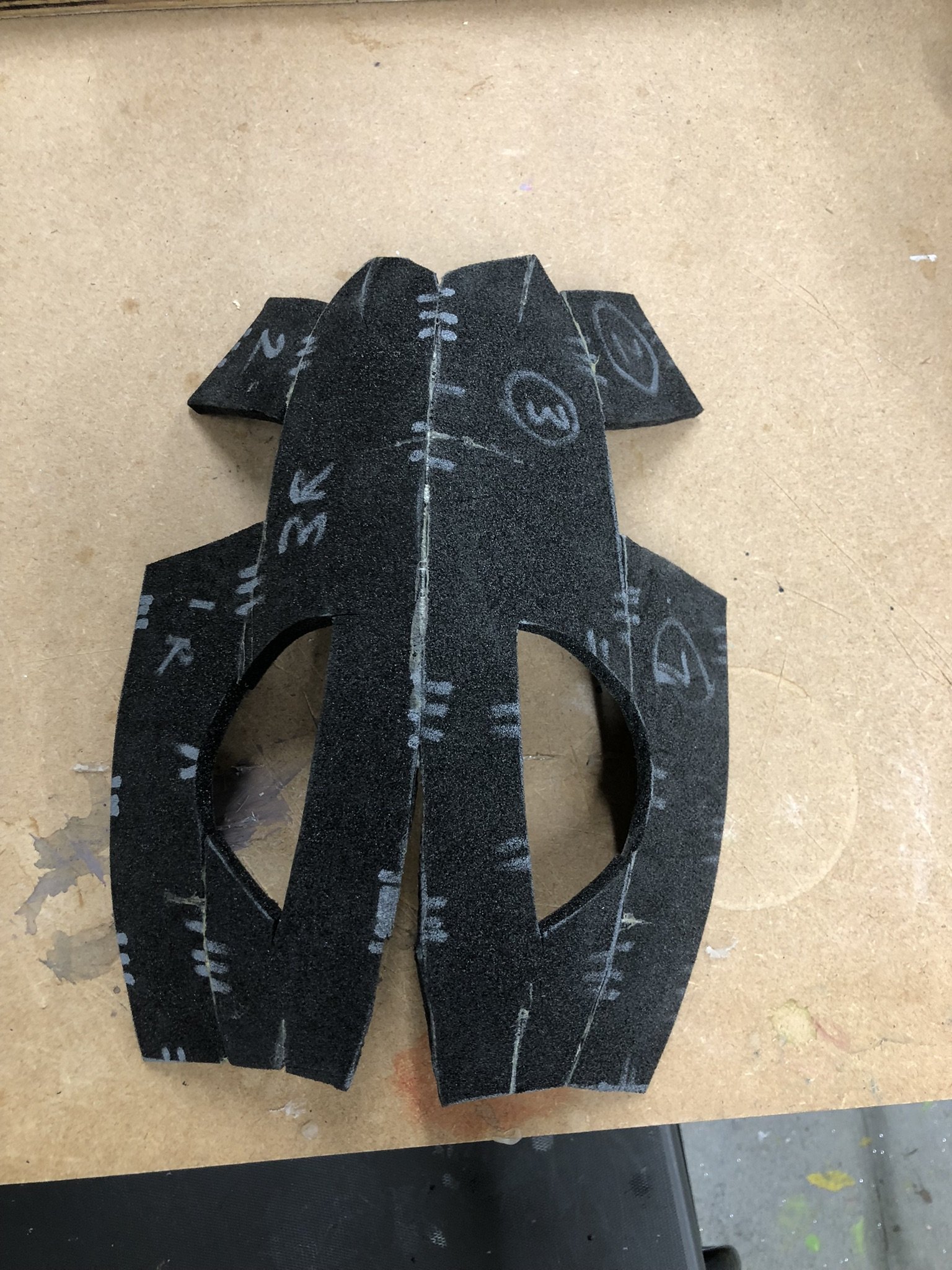
Assembling the body form
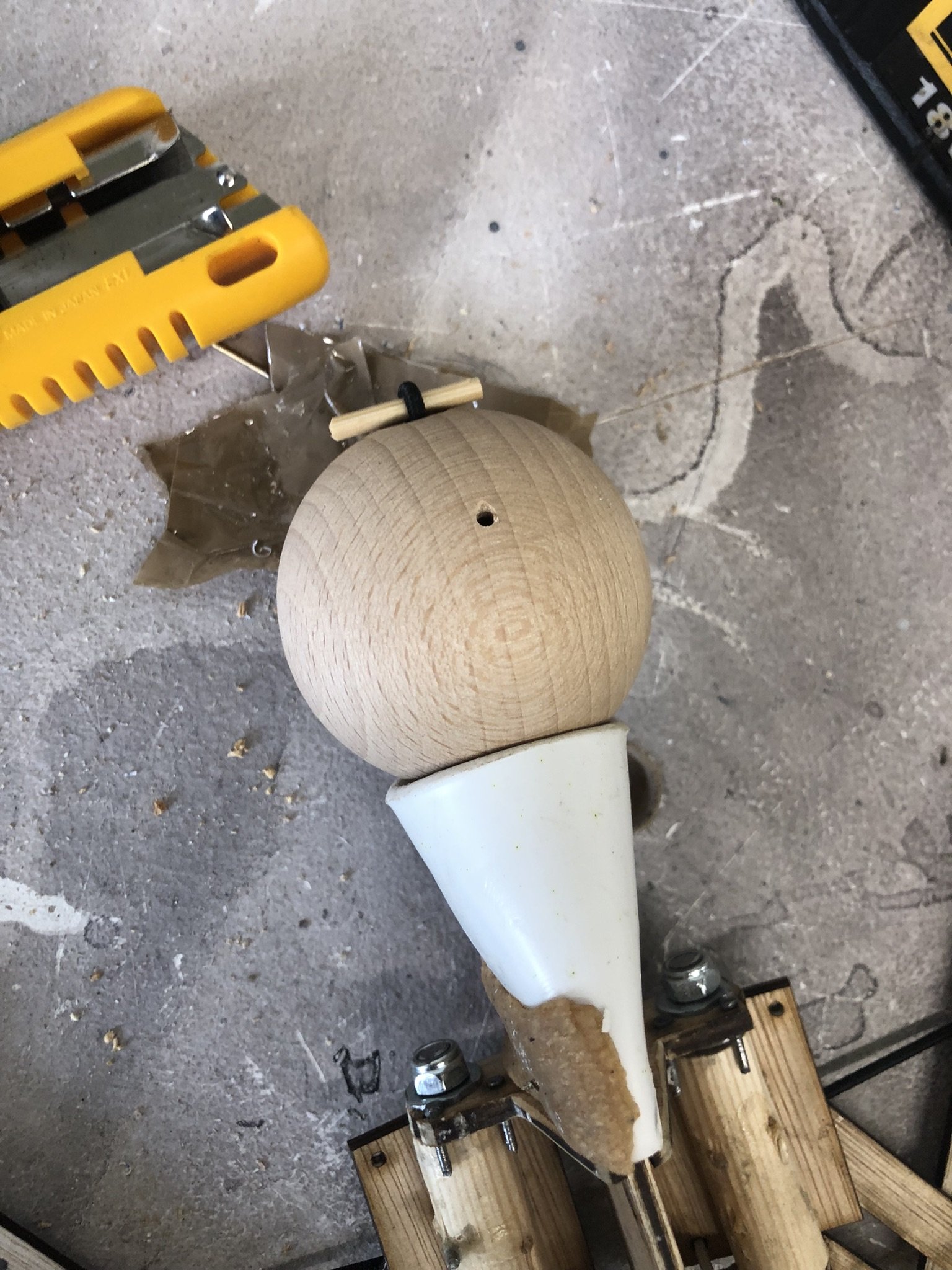
Head movement mechanism - based off a puppet system
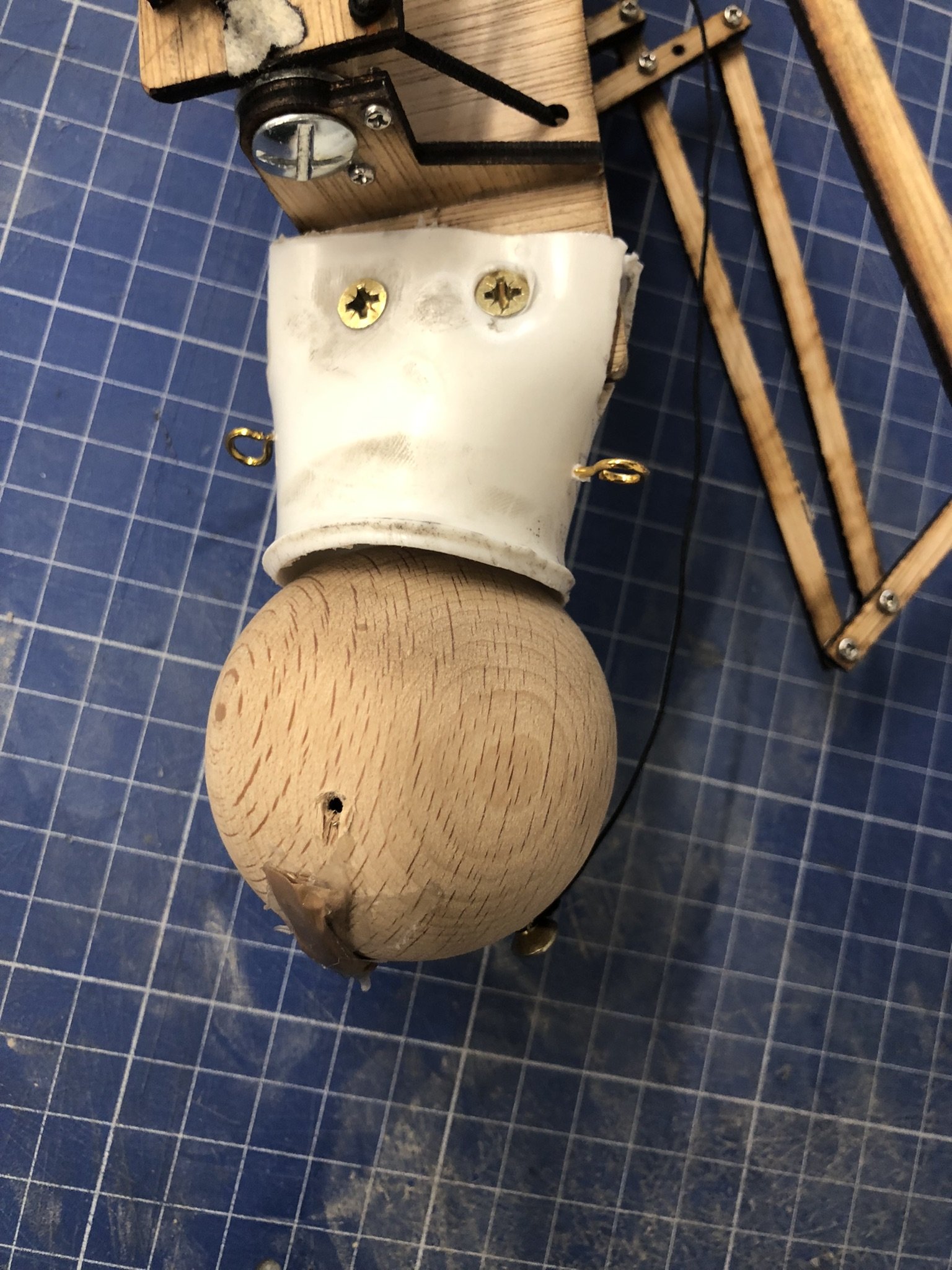
Attaching the head mechanism to the base of the body
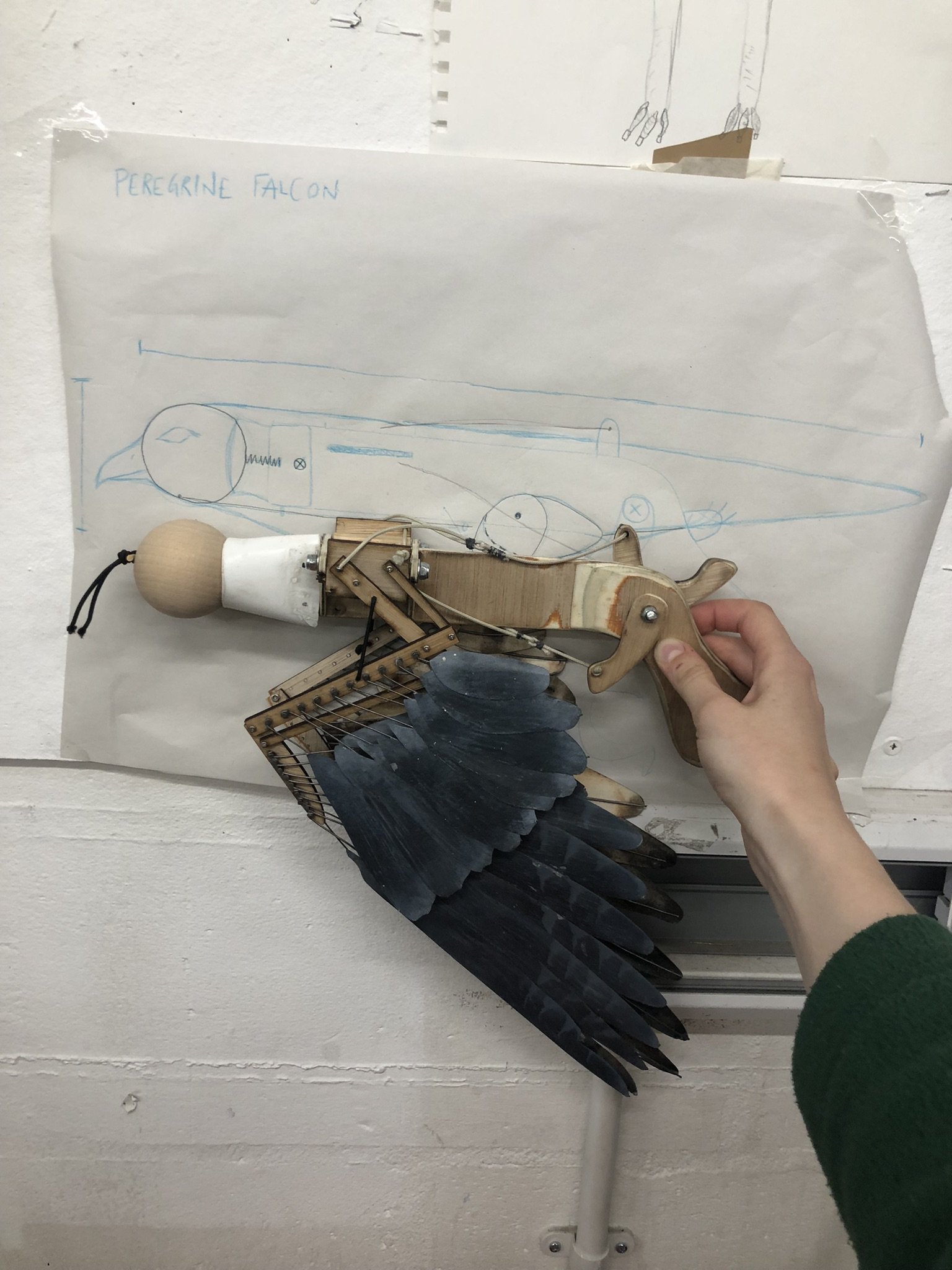
Scale drawing and puppet skeleton for refeerence
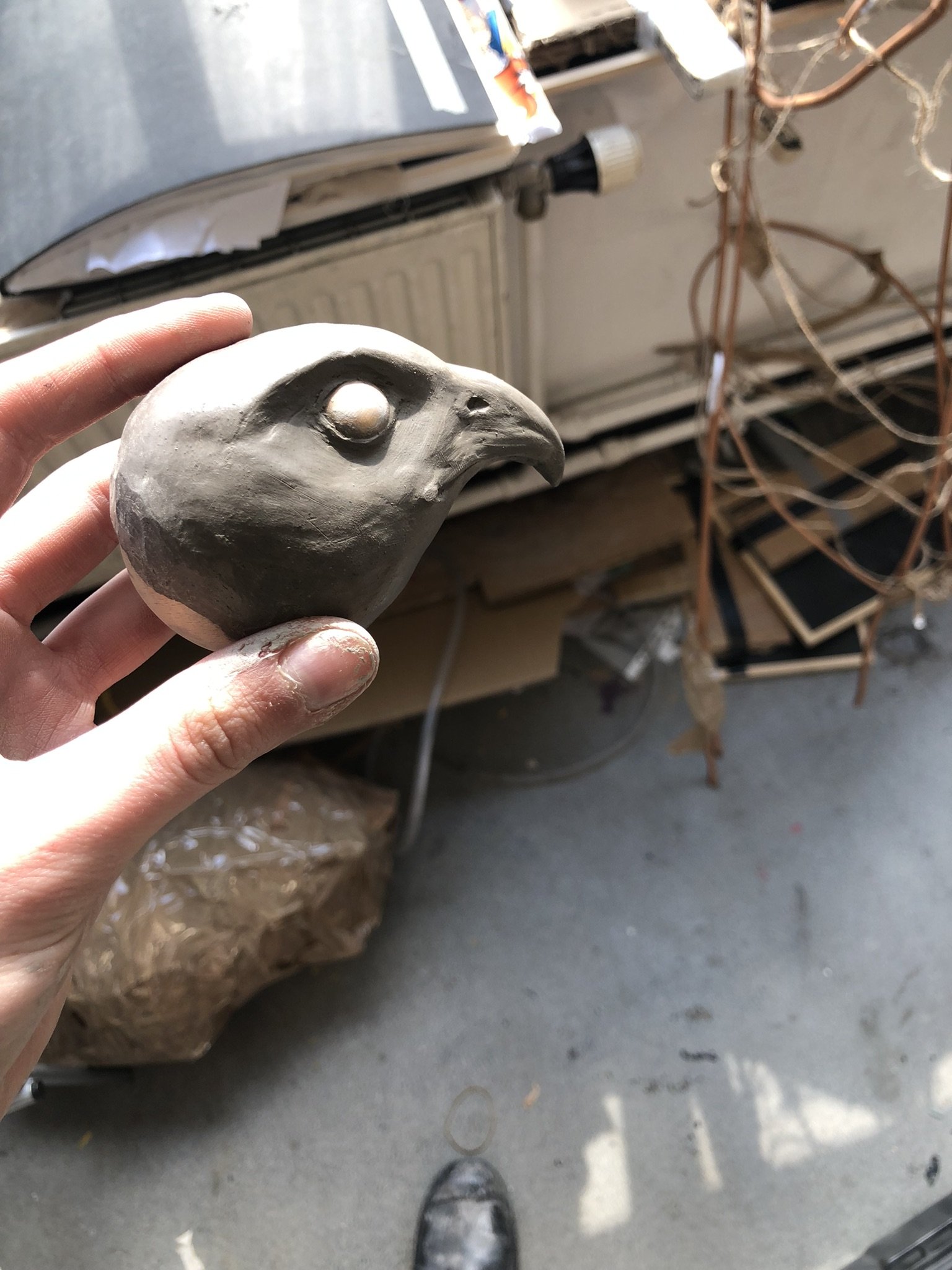
Clay sculpt ready to make a worbla cast from

Attaching the body form to the puppet

Painting the base - the Plastazode was covered with gum strip to keep the paper-like effect that the wings already had
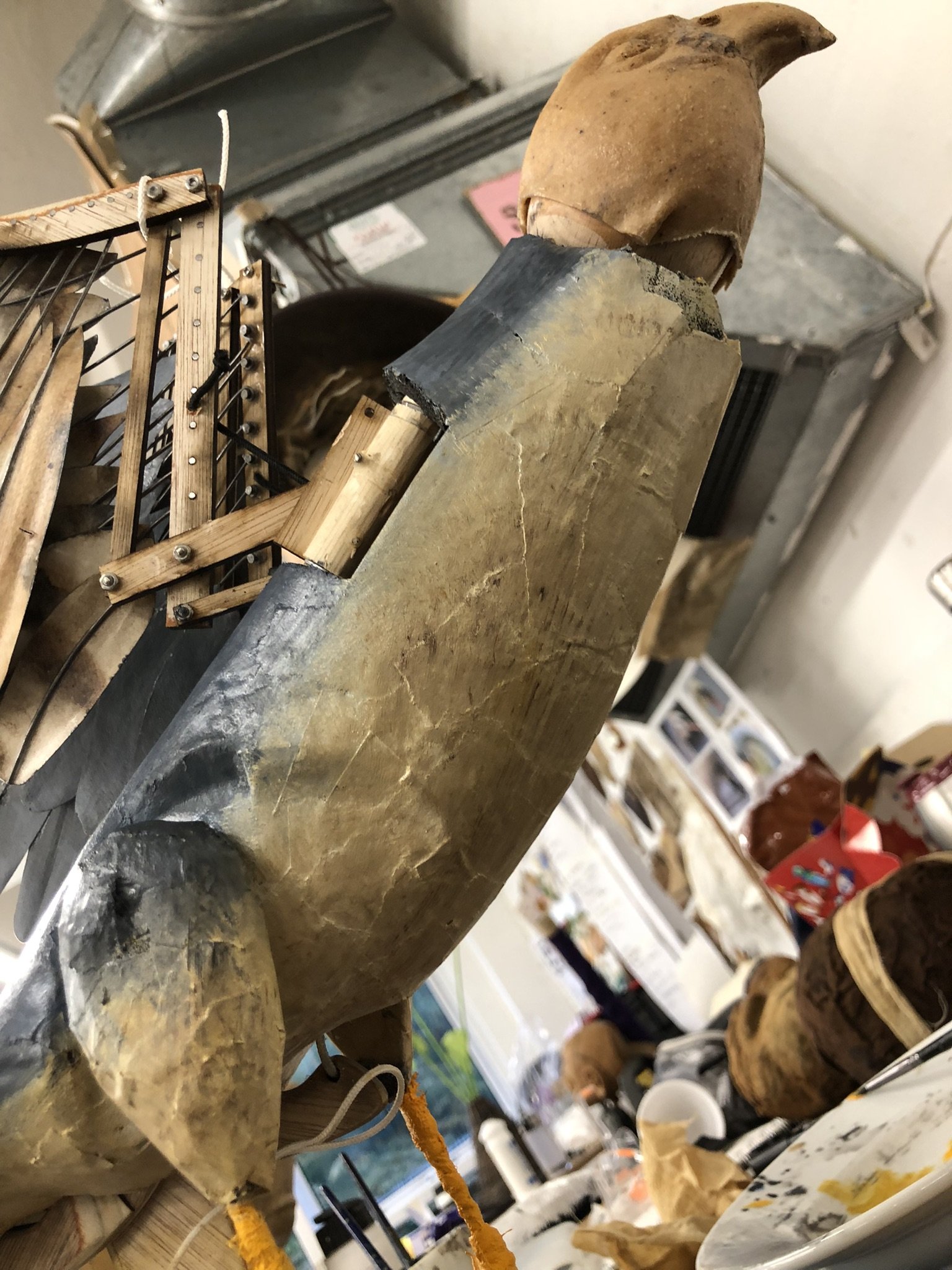
Painting and texturing the puppet

Painting legs and feet!
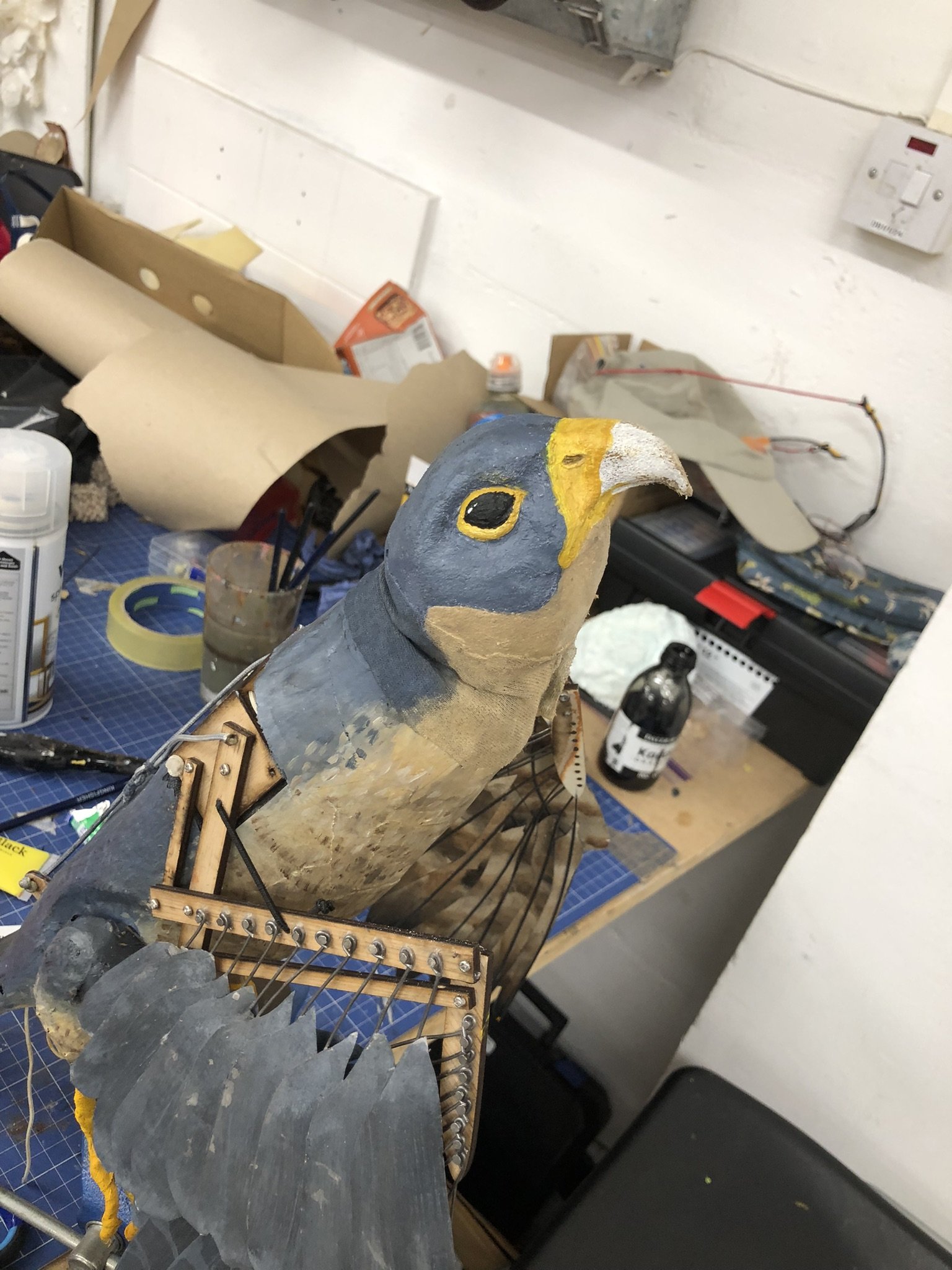
Base painting of head


finished render!


Finished render of wings
